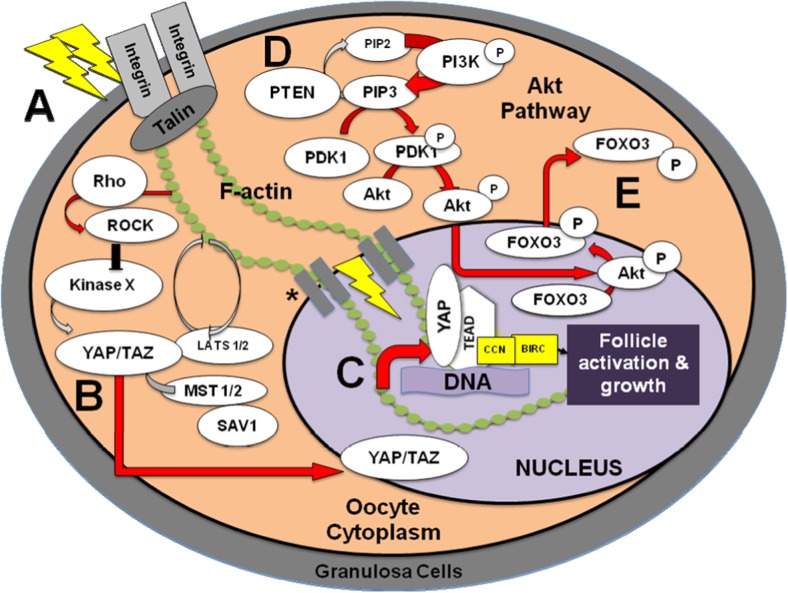Fig. 3.
Activation of a primordial follicle is regulated by Hippo and Akt signaling. (A) Fragmentation force is likely transmitted through actin to activate the Hippo signaling pathway via Rho GTPase and Rho-associated protein kinase (ROCK). (B) This leads to a dephosphorylated yes-associated protein (YAP) and transcriptional coactivator with PDZ-binding motif (TAZ) which enables entry into the nucleus. (C) Simultaneously, the Akt (protein kinase B) pathway is also activated by the phosphorylation of phosphatidylinositol-4,5-bisphosphate (PIP2) to phosphatidylinositol-3,4,5-triphosphate (PIP3) that subsequently leads to Akt phosphorylation allowing it to enter the nucleus. (D) Upon entry, the forkhead box O3 (FOXO3) transcription factor, an essential mediator of follicle dormancy, is phosphorylated at the Akt site causing nuclear export into the cytoplasm. (E) The nuclear YAP/TAZ binds the transcriptional enhancer associate domain (TEAD) allowing for expression of growth factors (i.e., cysteine-rich protein 61 (CYR61/CCN1), connective tissue growth factor (CTGF/CCN2), and nephroblastoma overexpressed (NOV/CCN3)) and baculoviral inhibitors of apoptosis repeat containing (BIRC) proteins. CCN and BIRC are growth factors that lead to follicular activation and cell growth. The red arrows indicate pathways that are likely active to activate the follicle while gray arrows signify non-active steps. PI3K, phosphatidylinositol 3-kinase; PDK1, 3-phosphoinositide-dependent protein kinase-1; MST1/2, macrophage stimulating; SAV1, salvador 1; LATS1/2, large tumor-suppressor homolog
*SUN1/2, transmembrane proteins; Nesprin, nuclear envelope spectrin repeat protein.

